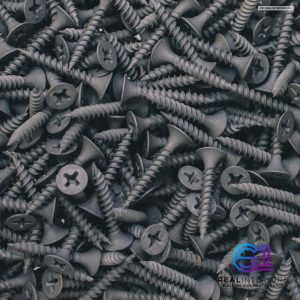Better to Hang Drywall With Nails or Screws?
 Nails and screws are the two most popular wood fasteners, but how do you know which one to use and when to use them?
Nails and screws are the two most popular wood fasteners, but how do you know which one to use and when to use them?
Drywall screws are more secure when installed properly, but drywall nails are much cheaper and, in certain areas, easier to put in.
So which is better?
When planning a drywall installation, here are a few things to consider:
Ceiling Installations

If you’re planning a drywall installation on a ceiling, drywall screws are the wise choice.
Drywall screws offer the needed protection that will help keep the drywall in place.
Don’t get us wrong; drywall nails are tough, but not when gravity is working against them.
Wall Installations
When it comes to wall installations, drywall nails are every bit as effective as drywall screws, and much cheaper.
Building codes can call for up to double the amount of nails as screws for hanging the same piece of drywall, making drywall screws seem like the better option.
But when you factor in the price of having to purchase a nail gun in order to install drywall screws, the cheaper option is to go with drywall nails and a hammer.
Unless you already own a drywall screw gun, purchasing one for a small, affordable installation is not worth the money.
Nail Lengths
While there is a little wiggle room when choosing a drywall screw or nail, you don’t want to go under the recommended length of either.
Drywall screws should only penetrate the wood 5/8 to 3/4 inch, meaning your nails or screws should be at least 1 1/4 inches long when installing 1/2 inch drywall.
3/4 inch drywall calls for a slightly longer nail (1 1/2 inches) and screw (1 3/8 inch).
To reduce the chances of “popping“, make sure your nails and screws have are a ring shank variety to provide better security.
Putting Nails and Screws in Successfully
Regardless of what you utilize, you’ll need to implant the head of the nail or screw a bit more profound than the surface of the drywall.
With nails, you will have a slight dimple around the head; with screws, attempt and get the head around 1/32 of an inch underneath the surface of the drywall, making a slight space.
The spaces and dimples you make will later be loaded with joint compound and covered up.
In the event that you twist a nail while pounding, it’s best to continue pounding the nail through the drywall surface as opposed to attempting to pry it out.







